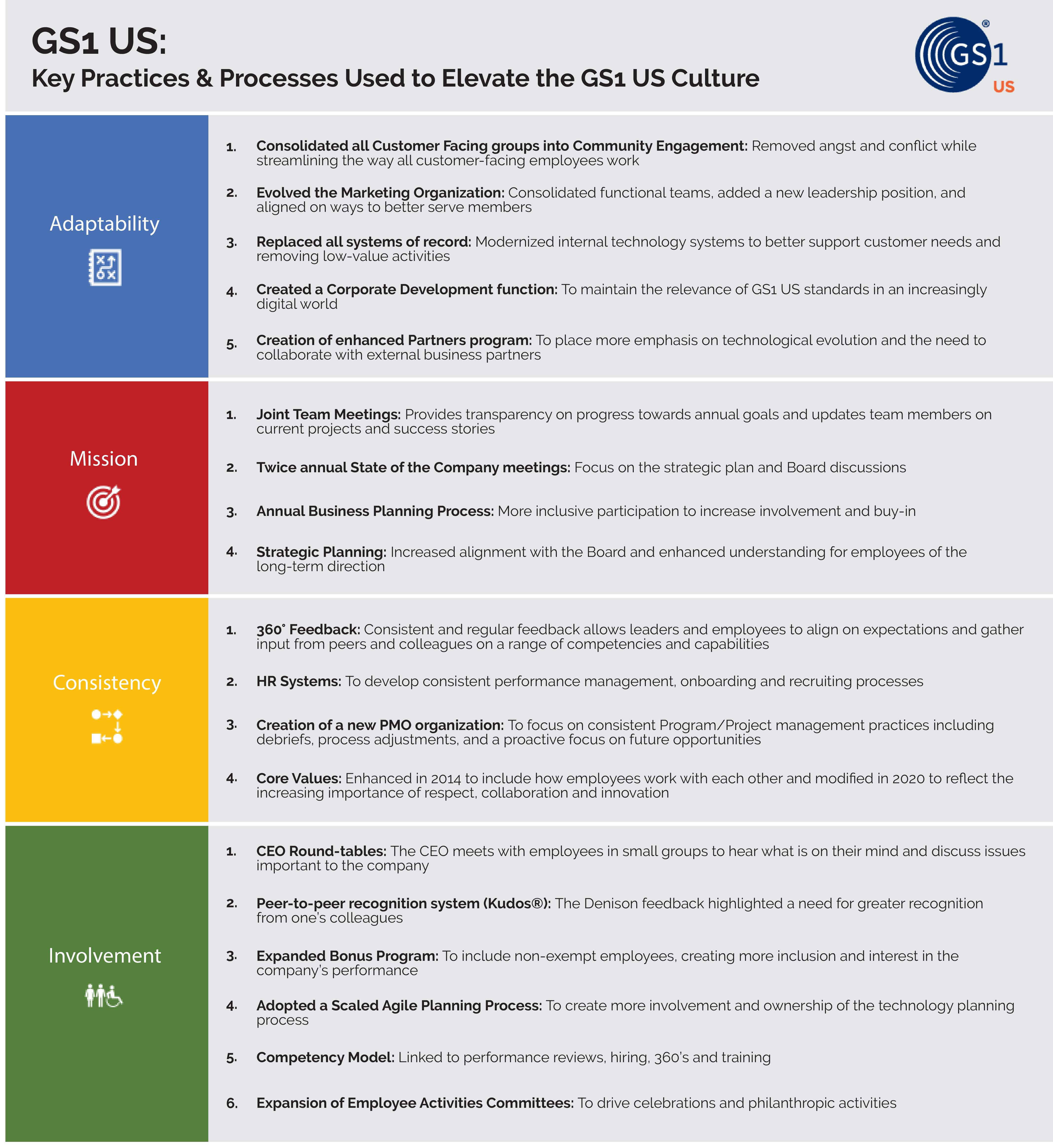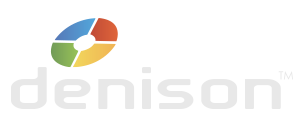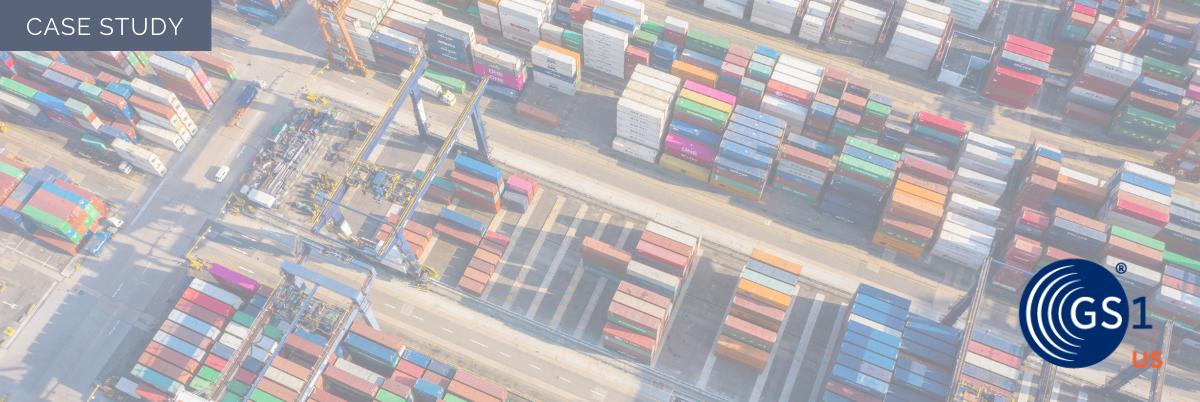
GS1 US: Creating a Culture Where Anything is Possible
GS1 US is a company that has a tremendous impact on how business is conducted across the globe. The success is evident in the performance of the organization and the culture that serves as the engine for that success. If you ask employees to describe the culture, you will hear the pervasive use of words such as collaboration, teamwork, innovation, inclusion, caring, and approachable. If you are fortunate enough to join the GS1 US team you will learn very quickly that expectations are high. What you do and how you do it are equally important.
But it hasn’t always been that way.
The Global Language of Business
What is the global language of business? GS1 US knows it is not Spanish, English, French, or Chinese. The global language of business is barcodes.
It is hard to believe that it was 1974 when the first live scan of a barcode happened. Today GS1 US has 300,000-plus members, and GS1 Standards are the most widely used supply chain standards in the world. Their barcodes are scanned over 6 billion times each day.
GS1 US has a lofty and important mission to help organizations of all sizes – ranging from large multi-
national corporations to small start-ups – uniquely and consistently identify products, assets, shipments, and physical locations throughout the global supply chain. But, more than that, GS1 US enables trade partners to exchange information critical to their businesses. As they say at GS1 US, ‘the identification of everything makes anything possible.’
That same philosophy can also be applied to the culture they have created. Spend a little time with the people at GS1 US and you walk away truly believing that anything is indeed possible.
The Identification of Everything makes Anything Possible
In 2009, GS1 US embarked on a culture journey that would ensure that the internal operations would meet the standards expected from the members they serve. It was that same year that Bob Carpenter became the President and CEO of GS1 US. To better understand the culture of the organization that he was now leading, he asked the workforce to participate in a culture assessment and help identify the strengths and challenges they faced. To be intentional about the culture, they needed to assess what they had and to be explicit about what was possible. The feedback was both honest and unambiguous.
2009
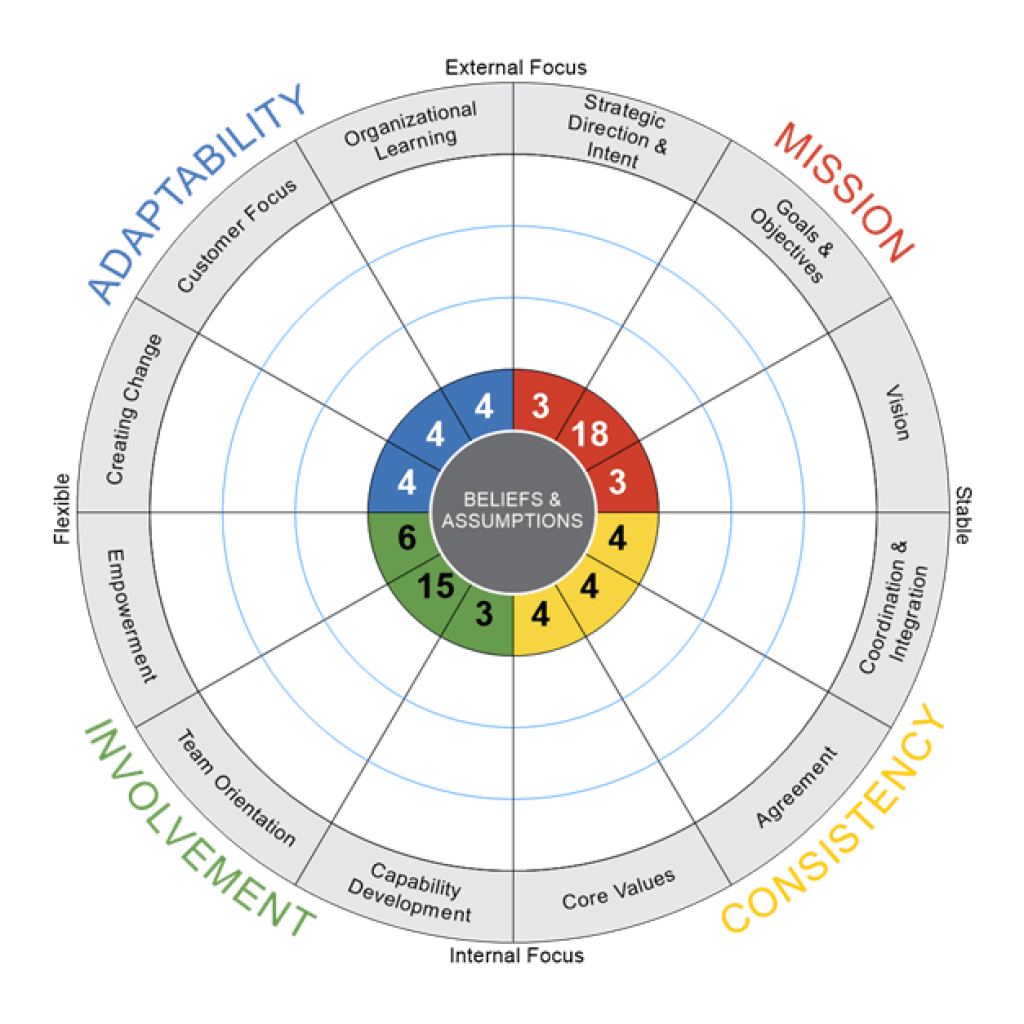
‘Nowhere to go but up’
GS1 US utilized the Denison Organizational Culture Survey (DOCS) to establish a cultural baseline. The survey benchmarks organizations against more than 1,000 organizations from around the world. The survey focuses on the aspects of culture that have been shown to drive business performance. In 2009, ten of the twelve cultural indexes measured were at or below the 6th percentile. In other words, 94% of organizations were scoring equal to or higher than GS1 US. Carpenter recalls that initial conversation with Dan Denison, founder of Denison Consulting, during which Denison said, “the bad news is I’ve never seen scores that low. The good news is there is nowhere to go but up!”
In the first year of the culture change effort, progress was hard to see. Carpenter noted…“Early on I expected to see results sooner.” It is important to remember that the work that goes into the intentional development of culture is not the result of a single action, program, or some ‘miracle moment.’ As Jim Collins noted in his book Good to Great, “the process resembles relentlessly pushing a giant, heavy flywheel, turn upon turn, building momentum until a point of breakthrough, and beyond.” Greg Rogers, SVP of Human Resources, who joined GS1 US a few years after the first survey, put it this way…” Significant change does not happen overnight. We had to get the flywheel moving.”
That was the beginning of a remarkable culture journey that continues today.
Annual Culture Transformation Process
To drive the culture transformation, GS1 US implemented a process designed to solicit feedback, seek understanding, set priorities, and take action. John Hoderny, VP of HR, credits this process as foundational to the culture transformation noting, “People have come to expect the cadence we developed. Employees know that we want the feedback, we will listen to what they say, and that we will take action. It is a purposeful approach to culture development and the results speak for themselves.”
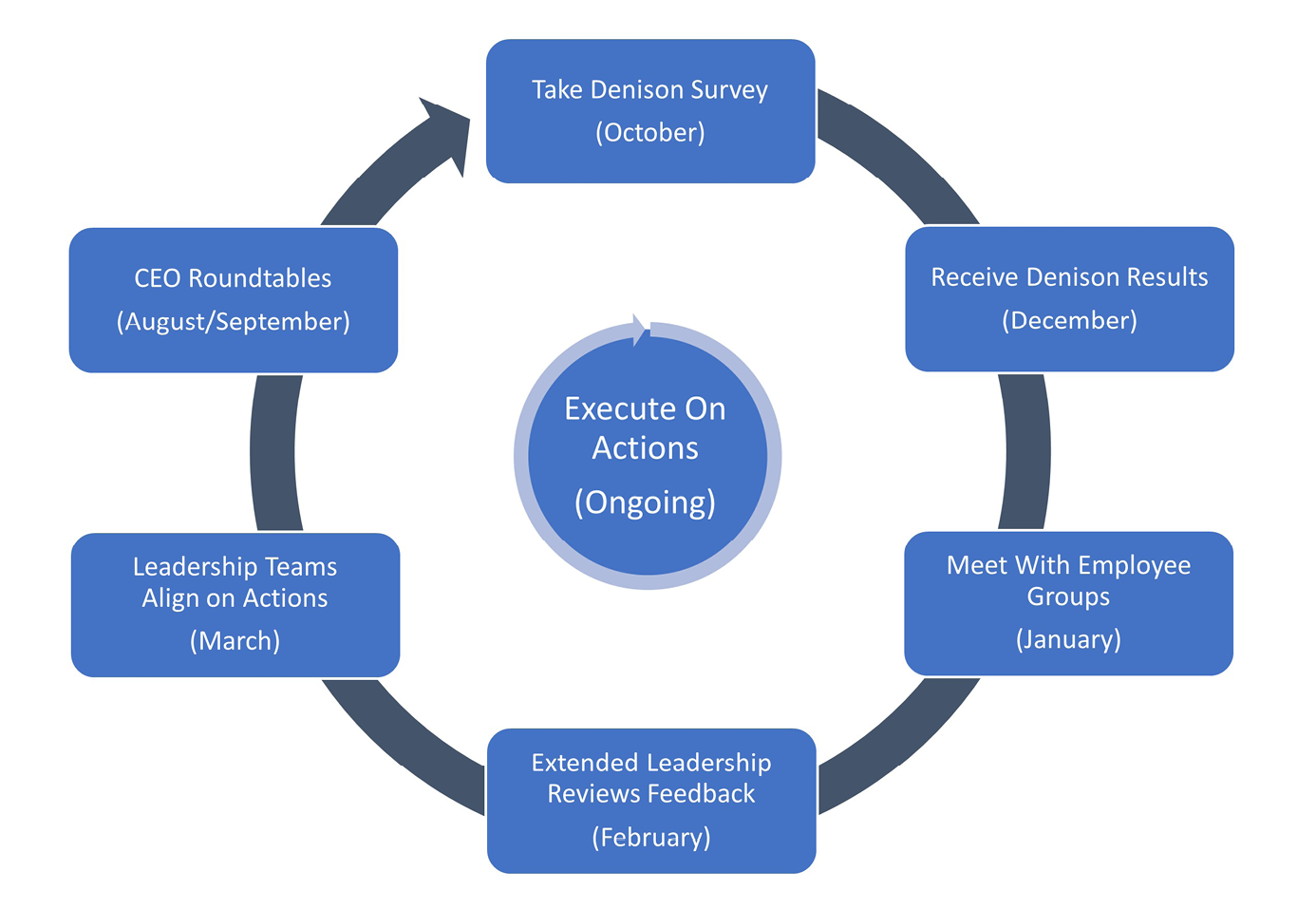
‘Grab an oar and start rowing’
The early years of the culture transformation were spent on a range of activities and the primary focus was in the area of Mission. Bryan Adkins, CEO of Denison describes the Mission trait of the Denison Model as ‘first among equals.’ He notes…” Before you can ask people to work in or across teams, or to change current practices, you need to align people around a common purpose and set of priorities.” The clarity of purpose and the strategies developed in those early years of culture work at GS1 US created a foundation upon which people could come together and contribute.
This spirit would later become a core tenant of GS1 US – a company that expects everyone to share opinions and suggest improvements. As Carpenter says today, “I tell
employees when they join that if they see an oar not being used, grab it, and start rowing.”
In 2011, the focus on the Mission trait was beginning to gain traction. The culture had been one in which silos were prevalent and an inside-out mindset was dominant, meaning, at times, GS1 US was too myopically focused on standards. To determine the way forward, it was important to create a new belief system that was focused on an outside-in approach, an approach that put the customer at the center. GS1 US needed to ask some hard questions about the relevance of their work and the way they interacted. As the company became clearer about the needs of their customers and translated those needs into strategies and goals, the flywheel began to turn.
2011
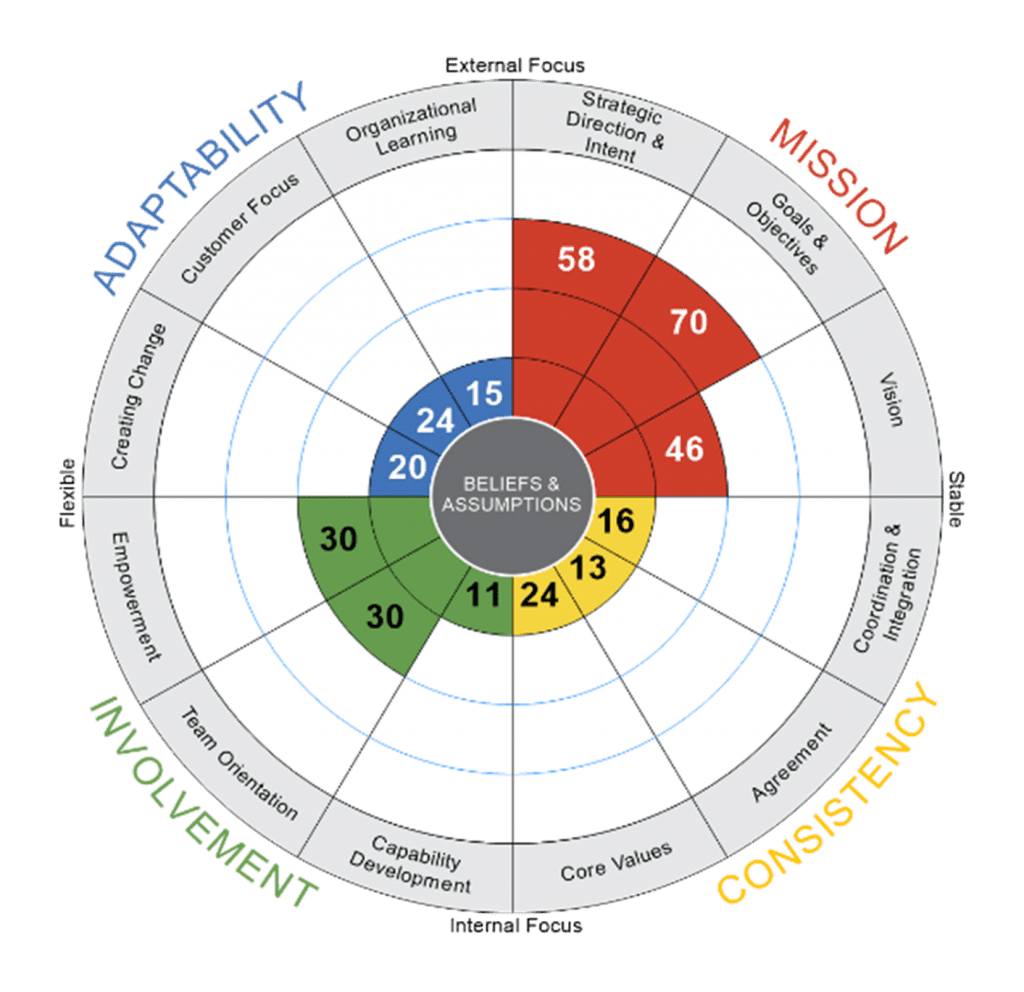
Over the next couple of years, the culture work intensified. The Denison Model offered a roadmap for setting priorities and taking action. As the company purpose and priorities gained traction, it was clear that GS1 US needed employees and leaders who would take collective ownership of the desired culture. Tough decisions had to be made as the organization focused on assembling the best teams that could support and champion a transformation of the culture.
Among the practices adopted during this time were quarterly talent reviews conducted by the Senior Leadership Team (SLT), 360° feedback for leaders, and investment in employee training including project management skills and understanding personality profiles through the DiSC model. According to James Chronowski, Sr. Director of Community Engagement and a 17-year employee with the company, “The early years were characterized by a more hierarchical approach and communication was lacking. It felt like we had lost our focus. The effort to reduce silos, align everyone to a common vision, and involve employees made it feel like we all had a voice.”
The attitude comes through to members
By 2014, the culture was showing a higher level of clarity about how work should get done and alignment around those expectations. GS1 US was more effectively managing the dynamic tensions between flexibility vs. stability and external vs. internal focus. High performing organizations are those that not only have higher survey scores and more color in their profiles, they also have balance across the system. Among the actions taken at GS1 US during this time frame was the expansion of their bonus plan to include non-exempt employees. According to Rogers, “The result was that everyone now felt like they were participating and understood how they contributed to overall company performance.”
Other actions included the consolidation of Joint Team
meetings, which are company-wide team meetings held every six weeks to increase goal transparency and coordination. There was also the creation of an employee development program that included, Conflict Management, Facilitation and Influence skills, Situational Leadership, and Coaching & Feedback. The investment in the development of the workforce was clearly having an impact. That impact was also translating to better customer care. Tenisha Ware, Manager of Member Support, says it best…” If you treat employees well and show an interest in them, productivity goes up, turnover goes down, and the positive attitude comes through to our members. We’re not just reading from a script, we take an active interest in the customer.”
2014
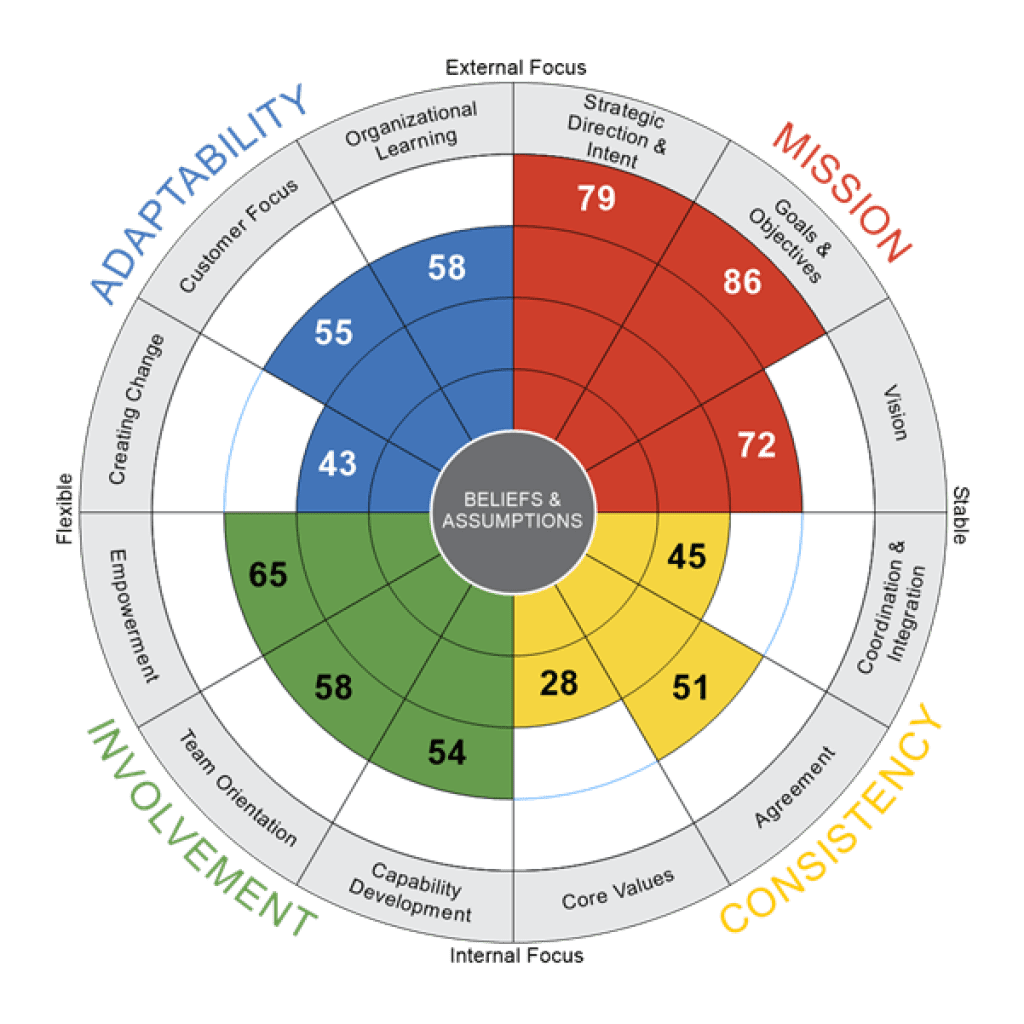
You do not get it right every time
Culture change and transformation requires passion and perseverance. You do not get it right every time and the culture will get tested. While the overall culture results continued to improve year-over-year, the technology group results dropped off significantly in 2017. Earlier that year they had developed a 3-year strategic plan that was reviewed by the board and company leadership. In general, the content of the plan was well-received, but with one caveat. Instead of a 3-year plan, they were told to get it done in 18 months. Evidence of the frustration that followed was seen in the Employee Engagement scores that dropped 60 percentile points from the previous year. The leadership knew they had to respond.

According to Hoderny, “Change management was missing from our Technology strategy.” Rabia Malik, Applications Manager in the Technology Group, acknowledged that much of the discussion and decision making around the strategy had happened behind closed doors, creating uncertainty. “The biggest complaint was around communication. People were also unclear about the implications of moving more quickly and worried whether they would be given the time to learn and develop the skills needed.”
An important response to the Technology group’s feedback was the introduction of a Scaled Agile Planning Process. The process is designed to foster alignment, collaboration, and delivery across multiple workstreams. GS1 US uses 11-week cycles that kick-off with two days of intense planning and coordination that includes product owners, developers, testers, and other stakeholders, resulting in a clear set of priorities and owners with specific deliverables and deadlines. According to Malik, “After two days of planning for the cycle, we sign off on agreements. The risks are acknowledged, and the plan is transparent. We all know that we will either win together or fail together.”
There are thousands of ‘moments of truth’
In 2018, the culture and engagement scores rebounded for the Technology group and continued to strengthen for the company overall. The change management lessons were applied as GS1 US built a new company headquarters at a nearby location. Employees were involved in every phase of the design and development of the new facility. A refresh of the Dayton Ohio facility was also conducted in a way that promoted involvement and ownership. Additionally, the GS1 US marketing team’s efforts yielded significant increases in member engagement—the result of strategic reorganization, the recruitment of top talent, and new leadership. In 2019, the company achieved something that very few organizations
do, a culture profile that had full color and placed them among the highest-scoring cultures across the globe.
By 2019, the GS1 US flywheel was turning with momentum and impact. Rogers said it best, “There are thousands of ‘moments of truth’ where you have to ask yourself, what is the right thing to do? We recognize the importance of those moments and try hard to get it right. We have a team of very smart people and we hold ourselves to very high standards. Our performance over the past 5 or 6 years has been outstanding. For us, the link between culture and performance is clear.”
2019
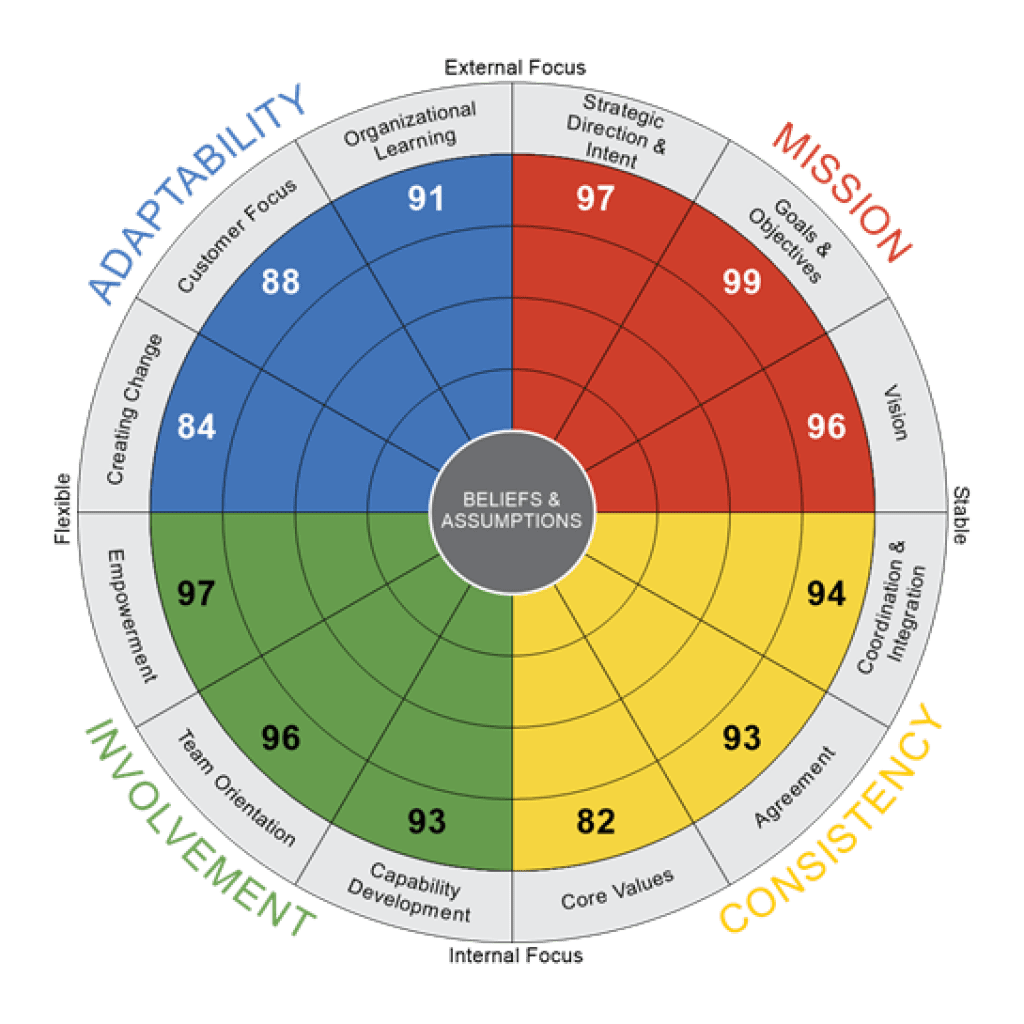
‘There is no catch’
In 2020, organizations across the globe were confronted with unprecedented challenges as the COVID-19 pandemic spread quickly, disrupting almost every aspect of our lives. In addition, the U.S. experienced profound concerns regarding social justice, also challenging organizations and leaders to reflect and act in response to demands for greater inclusion, opportunity, and respect. Ware expressed her feelings this way, “Over the last year I truly understood who I work for. Our company immediately jumps into action offering support and care for the team, regardless of the need. And Bob used his CEO Roundtables to encourage us to talk about what was going on and asked what he could do more of.”
The pride in the culture comes through when employees
talk about how GS1 US has both leaned on and leveraged the culture during challenging times. As COVID-19 forced people to work remotely the company offered support for employees and their families. They set up support groups for parents and offered assistance with child-care and tutoring that enabled employees to continue to serve customers. Social distancing rules meant that the annual picnic was not possible, so picnic baskets were sent to employee homes. Vivian Tai, Innovation Manager, joined the company in 2019. She reflects on her experience thus far by saying, “In my initial interviews I felt as though I’d love to work with these people. Early on in my tenure I would be thinking about the culture here and ask ‘what’s the catch?’ Then you realize there is no catch.”
‘I get genuinely excited about what’s coming next’
The people at GS1 US believe the culture is a motivator and a business advantage. Chronowski spoke about the shift in motivation through the years by saying, “When I first started working here it was a job, a place I felt like I needed to be for employment purposes. Today I’m here because of the people, the job, and the ambition. I get genuinely excited about what’s coming next.” Carpenter explains, “There are some key measures that we track including engagement with customers, adoption, and use of the standards, and our overall financial health. As our culture strengthened, we have seen performance across all of these measures improve dramatically.”
When asked to reflect on how far the culture at GS1 US has come since 2009, he said, “Today we focus on integrated solutions for our customers, a customer base that includes a tremendous cross-section of industries. To do that we need to be innovative, transparent, and inclusive. We have created great momentum and there is nothing more motivating than progress.”
